Historic Towns Local to Valley Springs
Among the numerous pretty villages and hamlets, South Devon features thirteen historic market towns surrounded by coasts and countryside and each boasts a rich and ancient heritage, below we list these local towns to us.
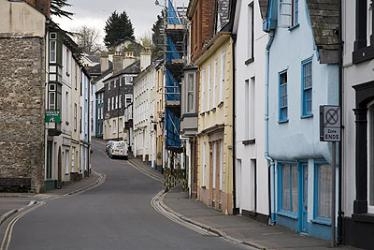
Ashburton
Ashburton was an important centre for the tin trade in the middle ages and in 1305 became one of the four official stannary towns (the others were Chagford, Plympton and Tavistock) which had special powers to assay the tin produced from the Dartmoor mines. When the local tin, iron and woollen trades declined in the 17th Century, Ashburton made a living from passing trade on the main road from Exeter to Plymouth and many of the buildings you see today date from this period.
When the railway bypassed the town (in 1846), its future did not look bright, and Ashburton was largely forsaken until the 1950's when the quiet and beauty of the Dart Valley began to attract residents seeking an escape from urban life.
Today Ashburton is a lively centre for inland tourism, with walking, canoeing, pony trekking and fishing bringing many visitors to the town. Beside specialist shops for walkers, there are plenty of antique shops, galleries and a variety of eateries to sustain your interest, as well as some unusual ceremonial events dating from the stannary days, including an ale tasting and bread weighing ceremony (3rd Sat in July). There's also a sports centre, a weekly flea market and a museum covering the history of mining and wool processing in the town. The Tourist Information Centre has lots more information.
A short distance west of Ashburton is the River Dart Adventure Centre where you can climb, slide and splash your way around acres of woodland, lake and river.
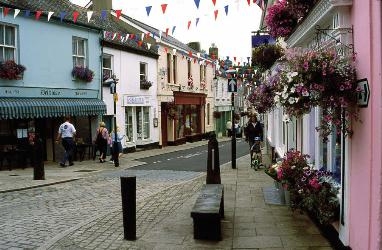
Buckfastleigh
A small market town on the old route between Exeter and Plymouth, Buckfastleigh was a centre for the wool trade for most of its history. The mid 19th century was the town's most prosperous period, when there were seven mills active, supplemented by some coaching inns for travellers to and from Plymouth. The modern townscape is an attractive mix of Georgian to early 20th Century.
At Buckfast, about a mile to the north, is Buckfast Abbey. Founded in the 11th century by King Canute, the Abbey has a fascinating history and is now an active Benedictine Monastery - the only monastery in the UK open to the public.
From the station you can catch the South Devon Railway heritage train along the Dart Valley to Totnes or the Buckfast Heritage Bus to the Abbey and the town. Next to the station is Buckfast Butterflies and Dartmoor Otters for wildlife enthusiasts. For the ultimate hands-on animal farm you can't do much better than the award winning Pennywell Farm Centre about a mile east of the A38 at Buckfastleigh.
Back in the town itself try the Valiant Soldier pub in Fore Street - which hasn't sold a pint since 1965 when it closed, and was left forgotten for 30 years. A perfect time-capsule experience. The Tourist Information Centre can also be found here.
Buckfastleigh has local shopping for your everyday needs, and there's also a Farmers' Market every Thursday in the Town Hall.
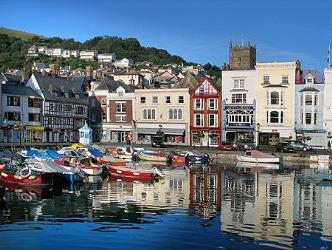
Dartmouth
A mesh of narrow lanes, stairways and corridors, with plenty of medieval and Elizabethan streetscapes, make Dartmouth a must-see for anyone visiting this part of Devon. The town has a reputation for good food - with many fine restaurants, as well as arts, antiques and craft shops just about everywhere. If the shopping doesn't keep you fit, the leisure centre will.
The natural deep water harbour here has been the driving force behind the town's history as a port and military centre. It grew to prominence in the Middle Ages exporting cloth from Totnes, and importing wine from France and Spain. The Cherub Inn (1380) and The Butterwalk (1628) which includes the Dartmouth Museum, are two of the oldest surviving buildings, among a wealth of architectural interest. Dartmouth lost economic momentum when Plymouth was preferred as the base for a western naval defence force. The consolation prize though, when the navy "returned" in 1863, was the magnificent red brick Britannia Royal Naval College which opened in 1905 as a training base for naval officers. Tours of the college can be booked through the Dartmouth Tourist Information Centre.
Also well worth the effort is a visit to Bayards Cove - a cobbled medieval quay and 16th Century coastal defence tower; Dartmouth Castle (1488); and Gallants Bower - a civil war redoubt - above the castle. The Newcomen Memorial Engine (next to the Museum) and St Saviours Church, which has a most unusually carved south door, dated 1631.
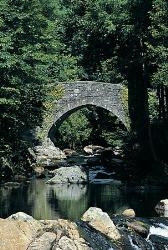
Ivybridge
Until the 20th Century, Ivybridge earned its living from tin, edge tools, corn, paper and cloth - the power for these enterprises provided by waterwheels driven by the energetic river Erme. Because of the bridge, this was also a prime spot to catch passing trade from Exeter to Plymouth, and as the latter grew in naval significance, Ivybridge developed coaching and accommodation facilities to match. The old bridge was bypassed in 1819 when the turnpike was straightened and the New Bridge built to lead more directly into the centre.
Much of the townscape around and south of the bridge area is of Georgian and Victorian construction - and all the interesting bits can be explored by following the Heritage Trail in the town guide, available from the tourist information centre.
Moorland walks are on the doorstep too - the 103 mile long Two Moors Way starts 250 yds north of the bridge, but there are plenty of shorter walks. Garden lovers should visit Lukesland Gardens, on the Harford road, but check opening times first. On the other side of the river, the path runs from the original Ivy Bridge to the remains of the original Brunel viaduct and into Longtimber Woods - a great place for a walk along the Erme or shady picnic.
Ivybridge shops are in Fore Street and nearby Glanvilles Mill shopping precinct. If you're self catering, check out the butcher, greengrocer and new delicatessen. Here also is the South Dartmoor Leisure Centre, with a range of facilities including indoor and outdoor leisure pools and the Tennis Courts with indoor and outdoor courts (see activity section). Endsleigh Garden Centre just outside Ivybridge has a huge range of plants, as well as gifts, books, toys, craft items and clothing. There is a local farm shop close by.
Three miles west of Ivybridge along the A38 is 'The Famous Lee Mill' - a local hot spot for woollen goods, clothes and gifts.
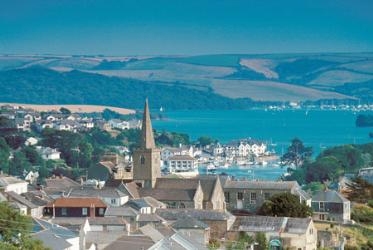
Kingsbridge
At the head of an estuary named after it, Kingsbridge is reckoned as the capital of the South Hams - the most southerly part of the South Devon area. Kingsbridge and the lands around it passed into the possession of the Buckfast Abbey some time after the Norman Conquest and in 1219 the Abbot was granted the right to hold a market in Kingsbridge, his monks selling their produce of honey, fruit, vegetables and thick cream. There are still regular markets on Mondays, Tuesdays, Fridays and Saturdays, and a Farmers Market on the first Saturday of each month.
A brief stroll around Kingsbridge soon tells of its maritime past - shipbuilding, ropemaking and other industries have been the town's mainstay, and shipbuilding enterprises prospered till the late 19th century building wooden coastal and oceangoing vessels.
The little lanes off Fore Street are very pleasant for an idle hour or two, and there's plenty of shopping interest as well as the excellent Cookworthy Museum - set in a 17th Century Grammar school and named after William Cookworthy, born in the town in 1705. It was Cookworthy who invented the English porcelain industry when he discovered china clay in Cornwall. If you require cultural diversion, there are two art galleries and a private cinema. There's also a leisure centre for more athletic diversions.
More details at the Tourist Information Centre.
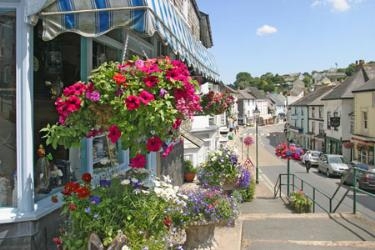
Modbury
A small but perfectly formed Devonshire market town, Modbury is tucked behind some strapping hills that shelter it from the prevailing southwesterlies. Its heyday as a market town with an active wool trade has long passed, and the Benedictine Priory established here in the middle of the 12th Century has also gone, although the early 14th Century church remains.
Modbury saw plenty of civil war action (two battles locally - both won by parliamentary forces) and like many Devon towns, it had a barracks built in response to the Napoleonic threat, bits of which are still visible. It was also an important junction for travellers to east and west, but was bypassed by the new London road (A38) and the London to Plymouth railway, both constructed in the middle of the 19th Century, a misfortune which somewhat pulled the plug on its economic momentum and tipped it into genteel decline. Even so, the wealth generated by its earlier success has left us an abundance of attractive Georgian and early Victorian buildings, especially in the Church Street / Broad Street area, and a sense of calm and tradition which guarantees its popularity as a place to live.
Modbury today enjoys a choice of quality restaurants, shops, galleries and pubs, and hosts an increasing number of tourists, some for fishing and birdwatching, but more generally as a perfect centre for general exploration of the coast and the moor. An annual May Fair involving the whole community is a reminder of Modbury's ancient lineage. It has also declared itself Europe's first "plastic bag free town" as a contribution to environmental support.
More details are available from Modbury's tourist information centre.
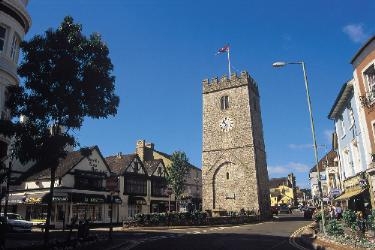
Newton Abbot
In 1846 The South Devon Railway reached Newton Abbot and transformed the town from a market town into a communications centre and base for industry. Branch lines to Torquay (in 1848) and Moretonhampstead (in 1866), made Newton Abbot a prime location for further industrial development.
Much of the fabric of the modern town dates from this period. Of particular note are Courtenay Park and Devon Square, both elegant Victorian developments and Mackrell's Almshouses on the Totnes Road. St Leonard's Tower, in the centre of the town, is the remains of a church demolished in 1836. The history of the town, with an appropriate emphasis on Brunel and the Great Western Railway, is on show at an excellent museum.
Newton Abbot today is a substantial shopping and commercial centre, the largest in South Devon, with all the usual superstores and high street names in attendance, and a busy industrial and financial sector. Market days are Wednesday and Saturday (includes an indoor pannier market) and there's a farmers market on Tuesdays in Courtenay Street. There is also an annual Cheese and Onion Fair.
Among the towns many attractions are Decoy Country Park, on the edge of town; Tuckers Maltings, the only UK working malthouse open to the public; Prickly Ball Farm Hedgehog Hospital, Plant World and Orchid Paradise. Also worth a visit locally is Ugbrooke House set in a fabulous Capability Brown garden. If you fancy a workout, then the newly refurbished leisure centre has a fitness suite, swimming pool and fitness classes.
All within a short distance are: Stover Country Park, with the recently added Ted Hughes Poetry trail, and Trago Mills, an unusual combination of discount warehouse and leisure park. England's highest waterfall is at Canonteign Falls, and the cutting edge Centre for Contemporary Arts and the Natural World is on the top of Haldon Hills, as is the Haldon Belvedere, if you like spectacular views, and the Haldon Forest Park if you like woodland explorartion with a difference.
The Tourist Information Centre in Bridge House has plenty more information.
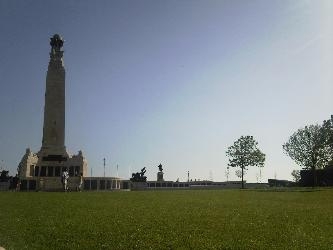
Plymouth
Plymouth was where Drake, Darwin, and many more set sail from her harbour with a spirit of discovery. The city's maritime heritage has blended with contemporary culture and the city now offers the best in entertainment, nightlife and shopping.
The city's pedestrianised centre has recently been modernised and includes all the usual high street shops as well as bars, cafes, clubs and restaurants.
The historic Barbican area is one of the oldest parts of Plymouth, where narrow Elizabethan streets contain small shops, galleries and bars. Various tourist attractions are located in and around the Barbican including the National Marine Aquarium.
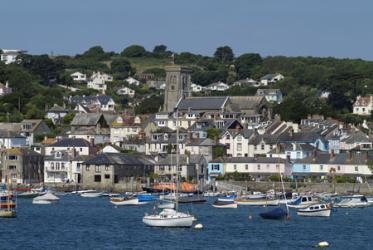
Salcombe
Sheltered inside the Kingsbridge Estuary, Salcombe retains its peace and quiet by favouring the pedestrian over the motorist. There is plenty of parking around the edges of the town and the wisdom of using it becomes clear when you see the narrow streets in the town centre. Salcombe was, and still is, a seafaring town. The sea trade peaked in the 1860s when it was home to 100 or so schooners (most of them locally built) shuttling to the Bahamas, the Mediterranean and the Azores for exotic fruit for the home market. It was a tough but lucrative business if you survived, and profits from the trade provided the cash for many of the substantial Victorian houses you see today.
There are plenty of small shops, many catering for watersports enthusiasts, as well as restaurants, galleries, and some very pleasant waterfront pubs. There's also marine services and berths for seaborne tourists, and two very pleasant little beaches - North Sands and South Sands, both to the south and west of the town. A short ferry ride over the estuary will bring you to East Portlemouth which has a more substantial sandy stretch. There is a castle on North Sands - a 16th Century artillery tower, destroyed in the civil war, and on the headland just beyond South Sands is Overbeck's Museum and Gardens - an elegant Edwardian house containing the weird and wonderful collections of scientist and inventor, Otto Overbeck. Perched on sloping cliffs, the gardens enjoy a balmy microclimate which encourages rare and tropical plants from all over the world. There's even banana trees growing in the open! Glorious views over the town and estuary too.
Salcombe has its own maritime museum, including details of the historic locally built fruit schooners, smuggling and some hands-on stuff for the kids. There is more family fun at the Splash Centre - a watersports activity centre on the South Sands.
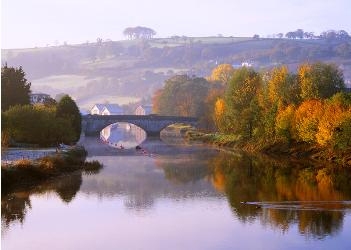
Totnes
Totnes, an ancient borough sitting on a steep promontory next to the river Dart, devotes itself in almost equal measures to arts and crafts, to history and architecture, and to eccentric lifestyles. Totnes is an absolute gem of a town - a must-do for your holiday itinerary.
The main shopping area is Fore Street, which runs from The Plains up past 16th and 17th Century merchants' houses to the East Gate Arch, and the High Street, which continues up the hill. Here you'll find a fine assortment of alternative health and organic food shops, local arts and crafts, and shops selling old and new books. There are markets on Fridays and Saturdays, and an Elizabethan market each Tuesday morning (May-September), when traders get their Elizabethan kit on. The Town Guide, available from the Tourist Information Centre, is essential for enjoying the town trail and don't miss Totnes Museum if you want a more detailed history. If you haven't exercised enough on your town walks, visit the Totnes Pavilion Leisure Centre.
There's so much here, summarising what to see in Totnes is difficult, but besides the main museum, you should try to include Totnes Castle, at the top of the town; Bogan House Costume Museum - in the Butterwalk; China Blue Ceramics - hands on pottery; The Leechwells near the Kingsbridge Inn (Totnes' oldest pub); The Guildhall and the Ramparts and for children - the Totnes Rare Breeds Farm.
From Totnes you can take the South Devon Steam Railway to Buckfastleigh or cruise down the glorious River Dart to Dartmouth by River Link passenger ferry. To enjoy the Dart at closer quarters try Canoe Adventures at Tuckenhay.